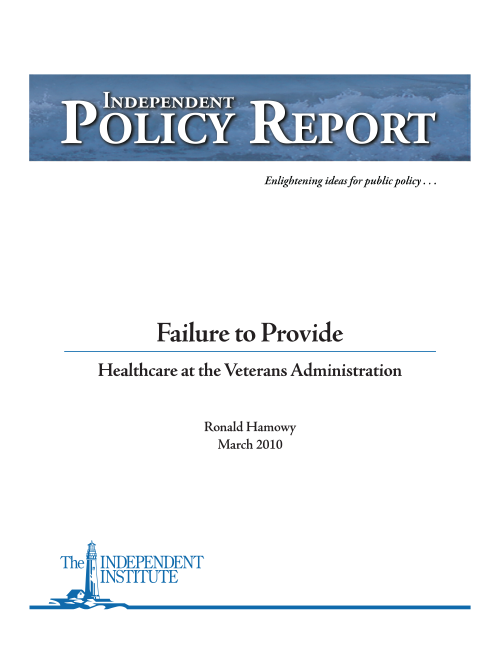Failure to Provide: Healthcare at the Veterans Administration sheds light on the role of the VA by following the course of its inception and development. The author explains that because the VA is a public organization, the health care provided by its facilities has always lagged behind the standards of private medical institutions. And in 1930, after the demise of the Veterans Bureau, the new VA was given responsibility not only for health care but also for all other veterans affairs. Additional legislation passed after World War II even contained measures such as unemployment compensation and educational allowances.
While the VA and the Veterans Health Administration’s budget, payroll, and number of healthcare facilities has expanded rapidly over the past several decades to become “by far the most extensive [medical program] in the country,” its standard of care has stagnated, and complaints of inefficiency and negligence continue to mount.
The VA was raised to a Cabinet department in 1989, although Hamowy argues that there was “not one substantive argument put forward” that justified doing so. The Cabinet position offered no lasting changes to address the extensive waste and inferior care. Conditions further deteriorated as the U.S. began to intervene in Iraq and Afghanistan, “substantially increasing the number of veterans needing medical care” from an already dilapidated system. Hamowy finds that “the lifetime costs of providing disability benefits and medical care to the veterans of these two wars . . . will amount to between $350 and $700 billion.”
The VA has clearly overstepped its original role as a health care provider for veterans with service-related disabilities, a raison d’être that the author believes “was extremely weak to begin with.” As new evidence of the VA’s inefficiency reaches the news daily, such as having to reconsider the Gulf War syndrome cases, Failure to Provide: Healthcare at the Veterans Administration presents a compelling examination of the rationale behind the administration that “paved the way for instituting a national system of socialized medicine.”









